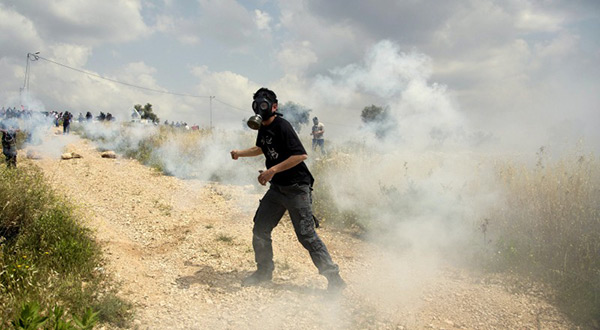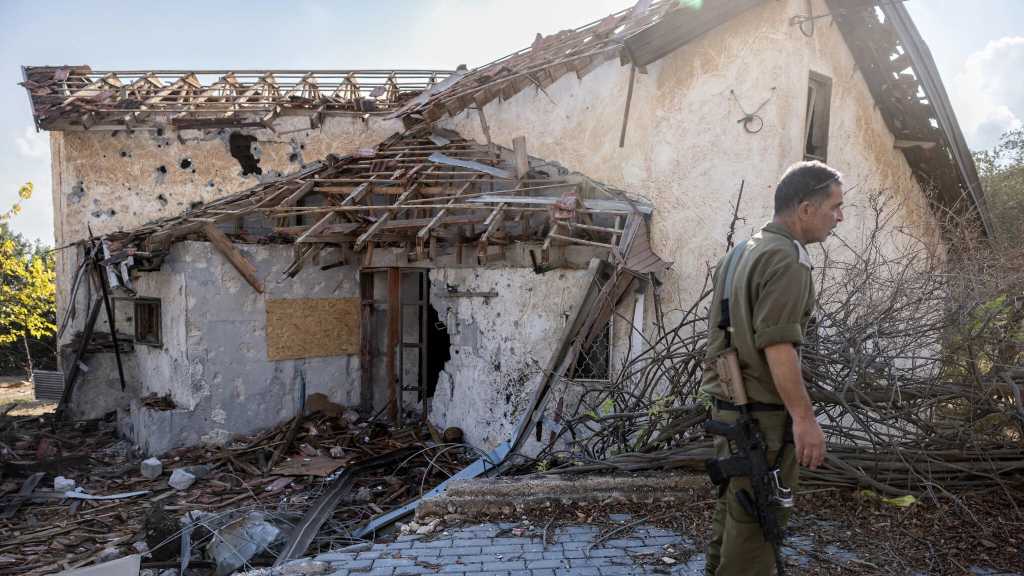Palestinians Devastatingly Affected by «Israeli» Tear Gas

Local Editor
A Palestinian refugee camp in the occupied West Bank may be the most exposed place to tear gas in the world, according to the author of a new study.

The Human Rights Centre of the University of California at Berkeley recently reported that the "Israeli" entity's security forces had carried out a "widespread", "frequent" and "indiscriminate" use of tear gas against Palestinian refugees in Aida refugee camp near Bethlehem.
The report - said to be the first to analyze the effects of tear gas in the West Bank - found that 100 percent of the more than 200 Palestinian residents surveyed in Aida camp were exposed to tear gas over the past year.
The report, No Safe Space: Health Consequences of Tear Gas Exposure Among Palestine Refugees, collected testimonies last summer in Aida and the nearby Dheisheh refugee camp.
"We found that the constant and unpredictable use of tear gas in Palestine refugee camps has a devastating effect on the mental and physical health of residents," said the report's co-author, Rohini Haar, a researcher at the UC Berkeley center and a doctor with Physicians for Human Rights.
Dr. Haar explained that the effects are especially harmful on "the most vulnerable, including pregnant women, children, the elderly, and people already in ill health".
The report surveyed 236 residents of Aida, all of whom said they were exposed to tear gas in the last year.
Of that, 84 percent of people said they were exposed while in their homes.
As its name implies, tear gas is intended to cause a person's eyes to water and skin to burn.
Residents also told the report's authors that the "Israeli" army's use of tear gas was "primarily unprovoked".
Home to about 6,400 Palestinian refugees, Aida covers just 0.017 square kilometers, making it one of the most densely populated places in the world, in addition to being the most vulnerable to tear-gas exposure.
Clashes between "Israeli" security forces and Aida camp residents are frequent, with the UN agency for Palestinian refugees [UNRWA] estimating that at least 376 confrontations took place between January 2014 and December 15 of this year, the report stated.
Two years ago, an Israeli soldier was filmed warning the camp's residents: "People of Aida refugee camp, we are the occupation forces. You throw stones, and we will hit you with gas until you all die. The children, the youth, the old people - you will all die."
Firing tear gas near homes violates the UN Code of Conduct and the UN Basic Principles on the Use of Force and Firearms by Law Enforcement Officials, the report stated.
It also explained that homes and schools are not designed to shield against tear gas, leaving residents with few options to avoid it or reduce its effects.
According to Dr. Haar, regular exposure to tear gas can affect "all [the] body['s] systems".
In the report, residents described various physical effects from such frequent exposure to tear gas, including losses of consciousness, miscarriages, trouble breathing, asthma, coughing, dizziness, rashes, severe pain, allergic dermatitis, headaches, neurological irritability and even blunt trauma from being hit by tear gas canisters.
"Everybody's system is affected by this," Dr. Haar said.
The "Israeli" army's frequent use of tear gas has also had left residents with psychological scars.
Because of the random nature of the "Israeli" raids, Aida camp residents find them themselves "perpetually on edge, fearing the next attack", according to the report.
Source: News Agencies, Edited by website team
Comments




